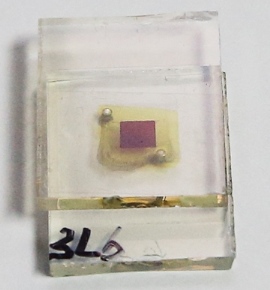Professor Jeung Ku Kang and his research team from the Department of Materials Science and Engineering at KAIST developed a new technology for producing highly efficient, transparent dye-sensitized solar cell (DSSC) using mobile quantum dots. The report was published online in Scientific Reports of the journal Nature on September 19.

The most important challenge in solar cell systems is to collect photons in the visible and infrared light regions. However, DSSCs that are currently mass producible show low photon absorption intensity and efficiency. In order to resolve this problem, light scattering and plasmonic structures were added to the solar cells, but these additions made solar cells thicker than preferable, thereby preventing the realization of thin transparent solar cells.

Professor Kang’s research team discovered the use of quantum dots as mediators to receive and retransmit broadband energy to sensitized dyes. Quantum dots were found to increase the photon collection intensity of sensitizing dyes in the visible range as well as broaden the overall spectra to the near-infrared range. Such broadened spectrum increases the efficiency of cells by more than 200%, which exceeds the value obtained from scattering and plasmonic structures. The use of quantum dots not only enhanced the overall efficiency of solar cells, but also obviated the need for scattering and plasmonic structures in solar cells.

Professor Kang said, “Through this research, both the high efficiency and transparency of DSSCs were achieved. Our goal is to apply these solar cells in transparent windows.” He also added, “It is likely that the range of application of solar cells will expand.”
This research was conducted with the support of various organizations including KAIST Center for Artificial Photosynthesis, Center for Inorganic Photovoltaic Materials, The World Class University, and Global Frontier Project.
Sang Eun Jee
eunicejee@hotmail.com

